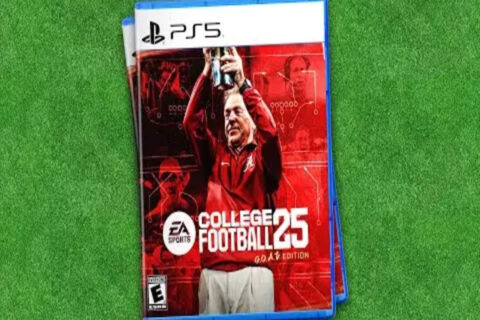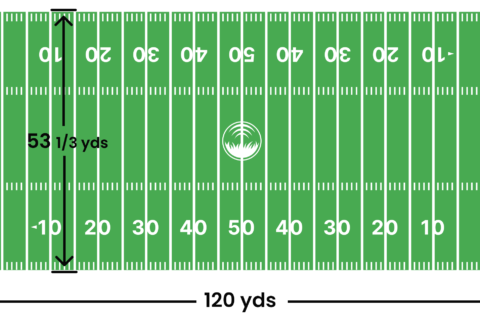A Major League Baseball game typically consists of nine innings. There is no maximum number of innings; games continue until a winner is determined.
Baseball, America’s pastime, brings excitement with its unique structure. Each game features nine innings, where teams alternate between batting and fielding. The absence of a maximum number of innings ensures that every game has a definitive winner, even if it means playing extra innings.
This format adds an element of unpredictability and thrill, keeping fans on the edge of their seats. Understanding the basics of innings and game length helps new fans appreciate the sport’s nuances and traditions. Dive into the world of baseball and experience the strategy, skill, and suspense that make each game unforgettable.

Credit: www.littleleague.org
Introduction To Mlb Game Length
Baseball is a game of strategy and skill. Fans love it for its excitement. Understanding the length of a Major League Baseball (MLB) game can enhance the enjoyment. Typically, an MLB game consists of nine innings. But under certain conditions, the game can go longer.
The Basic Structure
An MLB game is usually nine innings long. Each inning is split into two halves. The first half is the top of the inning. The visiting team bats during this time. The second half is the bottom of the inning. The home team bats then.
If the score is tied after nine innings, the game goes into extra innings. Extra innings continue until one team scores more runs than the other. There is no maximum number of innings. Games can be very long.
Comparing To Other Baseball Leagues
Different leagues have different game lengths. College baseball games are usually nine innings too. High school baseball games often last seven innings. Little League games are typically six innings long.
| League | Typical Innings |
|---|---|
| MLB | 9 |
| College Baseball | 9 |
| High School Baseball | 7 |
| Little League | 6 |
Understanding the structure of a baseball game helps fans enjoy it more. Knowing how many innings are played in different leagues can make watching more interesting. Always be ready for extra innings in an MLB game. They add to the thrill and excitement.
Standard Innings In Mlb
Major League Baseball (MLB) games are known for their unique structure. Unlike other sports, baseball does not follow a fixed time limit. Instead, games are divided into innings. Understanding the number of innings can make watching the game more enjoyable.
Regular Season Games
In the regular season, MLB games consist of nine innings. Each inning is split into two halves: the top and the bottom. The visiting team bats in the top half, while the home team bats in the bottom half. If the game is tied after nine innings, extra innings are played. Extra innings continue until one team has more runs at the end of an inning.
Playoff And World Series Games
Playoff and World Series games also follow the nine-inning structure. The rules are the same as regular season games. If a game is tied after nine innings, extra innings are played. The game continues until a winner is determined. There is no maximum number of innings.
Exceptions To The Rule
In Major League Baseball (MLB), a standard game lasts nine innings. But, some games do not follow this rule. These exceptions can make the game more exciting and unpredictable.
Rainouts And Suspended Games
Sometimes, rain or bad weather can stop a game. If the game stops before the fifth inning, it is called a “rainout”. The game will be played again on another day.
If the game is in the middle of an inning and the weather stops it, it becomes a “suspended game”. The teams will finish this game later, starting from where they left off.
| Scenario | Action |
|---|---|
| Rain before 5th inning | Game replayed |
| Rain in the middle of an inning | Game suspended |
Extra Innings: Beyond The Ninth
Games tied at the end of nine innings go into extra innings. These innings continue until one team scores more runs than the other. There is no maximum number of innings.
Extra innings can make games very long. Some games have lasted over 20 innings!
- Extra innings start if the score is tied after the 9th inning.
- The game continues until one team leads at the end of an inning.
- There is no limit to the number of extra innings.
These exceptions add thrill and drama to MLB games. Baseball fans love the unpredictability!

Credit: www.kget.com
Historical Evolution Of Game Length
The length of Major League Baseball games has changed over the years. This evolution reflects changes in rules and gameplay styles. Understanding the history helps appreciate the current format.
Early Days Of Baseball
In the early days, baseball rules were simple. Games often lasted until a team scored 21 runs. There was no set number of innings. This made game length unpredictable.
By the mid-19th century, games started having nine innings. This standardization helped make games more consistent. It also made scheduling easier for teams and fans.
Changes In The Modern Era
Today, a Major League Baseball game typically has nine innings. This has become the accepted norm. If the score is tied after nine innings, the game goes into extra innings.
There is no maximum number of innings. Games continue until one team wins. The longest MLB game lasted 26 innings. This game was between the Brooklyn Robins and the Boston Braves in 1920.
Impact Of Game Length On Strategy
Major League Baseball (MLB) games typically last nine innings. If the game is tied, extra innings are played until a winner is determined. The length of the game can significantly impact team strategies, especially in pitching and batting.
Pitching Strategy
The number of innings directly affects the pitching strategy. Teams must manage their pitchers carefully to avoid fatigue. Managers often use a combination of starting pitchers, relief pitchers, and closers.
- Starting Pitchers: Usually pitch for the first 5-7 innings.
- Relief Pitchers: Take over in the middle innings to maintain the lead or keep the game close.
- Closers: Specialize in pitching the final inning to secure the win.
If a game goes into extra innings, teams must adjust their pitching plans. They may need to use less experienced pitchers, increasing the game’s unpredictability.
Batter Strategy
Batter strategy also evolves with game length. Batters face different pitchers as the game progresses. This requires them to constantly adapt.
In early innings, batters study the starting pitcher. They look for weaknesses and patterns. In middle innings, batters face relief pitchers with different styles. They must adjust quickly to new pitches.
In late or extra innings, the stakes are higher. Batters often take more risks. They aim for hits that could end the game. This can lead to dramatic moments and game-changing plays.
Understanding how game length impacts strategy adds excitement to baseball. Fans and players alike must stay sharp and adaptable throughout the game.

Credit: www.krqe.com
The Role Of Umpires And Officials
Umpires and officials play a crucial role in Major League Baseball (MLB). Their decisions can affect the game’s outcome. They ensure rules are followed and maintain order.
Deciding On Game Continuation
Umpires decide if a game should continue, especially in bad weather. They check field conditions and player safety. If conditions are unsafe, they can pause or end the game. This decision is based on their judgement and experience.
Influence On Game Pace
Umpires also affect the game’s pace. They monitor pitch speed and player movements. They call strikes, balls, and outs quickly. This keeps the game moving smoothly. Umpires can issue warnings to slow players, ensuring the game does not drag.
| Role | Responsibility |
|---|---|
| Deciding on Game Continuation | Checking field conditions, player safety |
| Influence on Game Pace | Calling strikes, balls, and outs quickly |
Fan Experience And Game Duration
Understanding game duration in Major League Baseball is important for fans. A typical game lasts nine innings. But, extra innings occur if the score is tied.
Spectator Preferences
Fans love a thrilling and well-paced game. Long games can be tiring, especially for kids. Short games keep the excitement high and maintain interest. Extra innings add suspense but can also lead to late nights.
Here’s a simple table showing preferences:
| Game Length | Fan Experience |
|---|---|
| Short (under 3 hours) | Exciting and manageable for all ages |
| Average (3-4 hours) | Moderate engagement, suitable for adults |
| Long (over 4 hours) | Exhausting, especially for young fans |
Effects On Broadcast And Attendance
TV networks prefer games with predictable durations. Games longer than expected can disrupt schedules. Short games fit better into broadcast slots, attracting more viewers.
Attendance also depends on game length. Families with children prefer shorter games. They are more likely to attend if the game ends before bedtime.
Here are some key points:
- Short games increase TV ratings.
- Predictable game duration helps with scheduling.
- Fans prefer attending shorter games, especially on weekdays.
Balancing game length and fan enjoyment is crucial. It impacts both live attendance and TV viewership.
Looking Ahead: Future Of Mlb Game Length
Major League Baseball (MLB) games usually last nine innings. Some games can extend due to ties. The future of MLB game length is a hot topic. Fans and experts discuss possible changes. Let’s explore potential rule changes and the role of technology and media.
Possible Rule Changes
Rule changes could impact game length significantly. One idea is the introduction of a pitch clock. This clock would limit the time between pitches. Another idea involves limiting mound visits by managers and coaches. Fewer visits could speed up the game.
Some suggest reducing the number of innings. This is a more drastic change. It could make games shorter but might upset traditionalists. These rule changes aim to make games faster and more exciting for fans.
Influence Of Technology And Media
Technology and media also play a big role. Instant replay reviews can extend game time. On the flip side, technology can help speed up games. For example, electronic strike zones could make calls faster and more accurate.
Media influences game length through advertising. Commercial breaks are a big part of baseball broadcasts. Shorter breaks could help shorten games. Still, this would require balancing revenue needs with fan experience.
In summary, the future of MLB game length involves many factors. Rule changes and technology could make games shorter. Media will also play a key role in this evolution.
Conclusion
A typical Major League Baseball game lasts nine innings. Extra innings occur if the score is tied. Theoretically, there is no maximum number of innings. Games continue until a winner emerges. Understanding this can enhance your enjoyment and knowledge of baseball.
Stay informed and enjoy the game!








